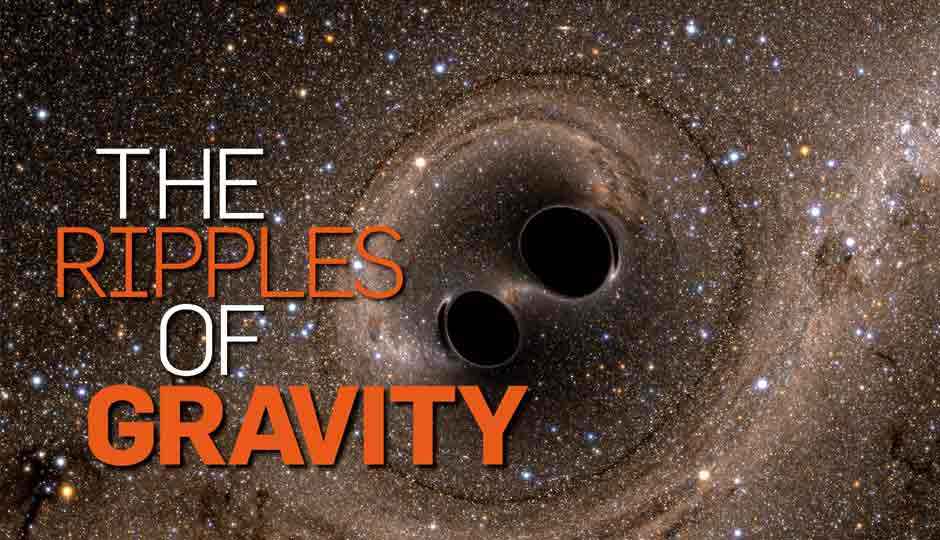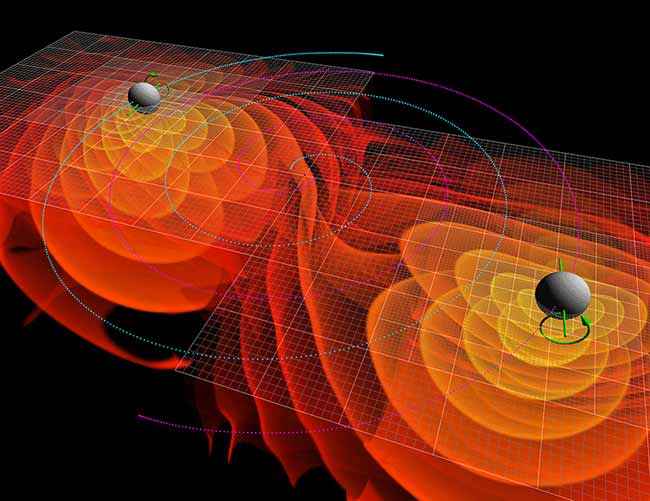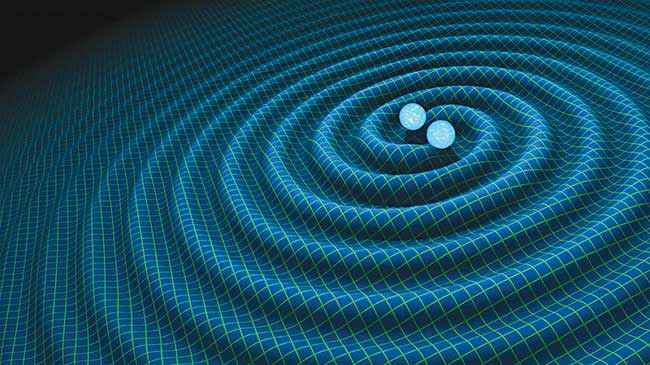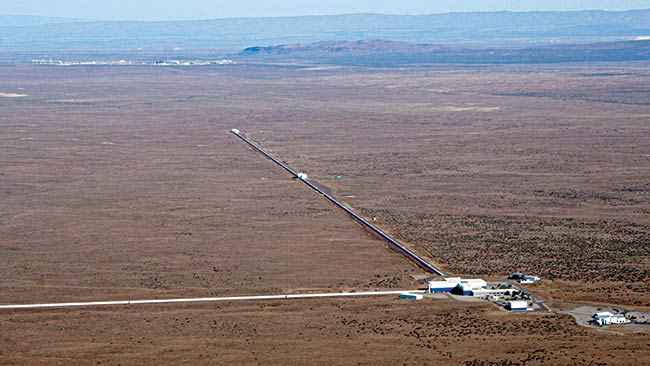Gravitational Waves: India contribution to the LIGO experiment
The discovery of gravitational waves is of immeasurable significance to our better understanding of the universe and beyond

It has been a monumental decade for experimental physicists, as discoveries are being reported by the dozen from all corners of the planet with some of the most complicated and intricately designed laboratories in the history of humankind. The orders of magnitude that separate the masses of the phenomena that are being studied are gigantic; with the Higgs boson of the order of 10-30 Kilograms to the mass of a black hole, averaging at 1030. That’s a size difference of 1000000000000000000000000000000000000000000000000000000000000 (that’s 60 zeros. We counted). The latest in these series of fascinating discoveries has been an announcement that has confirmed what science has predicted for a long while: The discovery of gravitational waves. First predicted by Einstein exactly a century ago, it has taken humanity this long to finally construct an experiment intricate enough to capture the data necessary to validate Einstein’s predictions. So, one would expect that this would be an extremely complicated experiment that would take a couple of PhD’s and a superhuman IQ to even begin to understand. But, at the fundamental level, this is an experiment that can be replicated at home! In this article, we demystify the physics that goes behind detecting gravitational waves and the seminal work that goes behind it.
 Survey
SurveyTo understand why gravitational waves are important, one needs to go back in time to when Einstein first proposed his two theories of relativity. The Special Theory of Relativity, first explained in the paper ‘On the electrodynamics of moving bodies’, published in the year 1905, answers some pretty important questions on space and time. Until then, the only person who had ever touched on such notions was Newton, who merely proclaimed that space is space and time is time. ‘Tis what it is’ he said, before going down to the 17th century tavern at the end of his road and drowning questions of existentialism in considerable quantities of ale. Eventually, Einstein revisited these fundamental questions and answered them with two simple ideas. Time and space are equal, and not distinct, they form the fabric of spacetime, the arena where physics occurs and each observer has his own set of coordinates (a set of rulers and a clock) and therefore he/she measures everything independently. Except for the speed of light, which he theorised is a constant for all observers. Using this as basis, he launched into the general theory of relativity. This is what provided a basis to understanding gravitational waves, so let’s consider this in some detail.
Depiction of black holes merging and the gravitational waves that emit from them.
Let’s take Einstein’s theory of special relativity to be true (as opposed to sitting and reading through a decade’s worth of mathematical ideologies). Space and time are now an interwoven fabric, think of it as a giant membrane that exists everywhere (and every…when?) around us. So far, we have no objects or any physics at all! It’s just one giant, happy, undisturbed membrane. For the sake of simplicity, picture a 2-dimensional membrane, which corresponds to one space dimension and one time dimension. Now, drop a tennis ball onto this membrane in your head. The membrane, which was stretched out now sinks under the weight of the ball. According to Einstein’s theory of relativity, this is precisely what happens to spacetime in the presence of mass! The presence of any object warps space and time.
So how does this explain gravity? Go back to the membrane you have in your head, and place a coin somewhere close to the ball. The coin will automatically start rolling down to the centre because of the dent produced by the ball and, if you give the coin the right amount of momentum in the right direction, the coin will start spinning around the tennis ball. This can also be verified at home using a simple bowl: any coin with the right amount of velocity will start spinning around the centre of the bowl. Of course, eventually the real world experiment will fall to the centre because friction causes the velocity of the coin to slow down, but this sort of nuisance doesn’t bother cosmic objects. The exact mechanism that is explained above is why planets continue to revolve around the sun, it’s all due to the warp in spacetime that the sun produces.
This is a very handy idea. To understand gravity, we simply consider the warps produced by massive objects. This is why physicists are obsessed with geometry, everything we need to know about the masses and the dynamics of the body can now be understood, at a fundamental level, simply by the curvature the object produces. It stands to wit that this curvature produced by a single object will move with the object. This was the idea that prompted Einstein to predict the existence of gravitational waves. An object that is moving will produce a moving gravitational field; a series of ripples as the curvature produced by the body moves with it, like waves produced when moving your hand through a pond of water. Since these ripples are curvatures in spacetime, we should be able to observe it as a ‘springy’ effect, a continuous contraction and expansion effect as the ripples move past us. An experimental detection of gravitational waves will, once and for all, conclusively prove Einstein’s theory of gravity.
Ripples or waves in the interwoven fabric of space and time
This is precisely why the Laser Interferometer Gravitational Wave Observatory (LIGO) was set up in the United States of America. The experimental data not only validates relativity but also provides a novel method of studying astronomical objects that are at a great distance from us simply by considering the gravitational waves they produce. The experimental setup took a mammoth 8 years to construct, and was completed in the year 2002. There are two facilities which together comprise the LIGO experiment: The LIGO Livingstone observatory in Livingston, Louisiana and the DOE Hanford site in Richland, Washington. Each observatory has an L shaped ultra-vacuum system measuring nearly 4 kilometres in length, where the experiments are carried out.
These detectors, despite the enormous complexity involved in construction and effective noise filtration, have a very simple principle at their very core: the interference of light. It works by having two long mirrors placed perpendicular to each other, a fair distance apart. The mirrors are freely suspended and are therefore allowed to move. A laser light, after it has been optically filtered to produce exactly one particular frequency is split into two beams and each beam is reflected off one mirror (the actual experiment uses a device called a Fabry-Perot cavity to make it reflect back and forth multiple times, but that is merely to improve the quality of the signal) and recombined with the other beam. Now, if the path that the light travels is the same for both beams, then the two light beams will have traversed an equal number of wavelengths and will therefore interfere constructively, i.e., every crest of one beam will correspond to a crest of the other beam and similarly for every trough. However, if a gravitational wave were to pass through the experimental facility, we would expect one of the two perpendicular paths to shift its total length. Therefore the two waves will no longer constructively interfere. By measuring how they interfere, scientists can then calculate how much the path length changed and for how long; correspondingly they can calculate the strength of the wave and how long the signal lasted for.
The problem with detecting gravitational waves is that these fields are weak. Very weak. So weak in fact, that even random signals generated by the sound of airplanes soaring many thousands of meters overhead are enough to disturb the experiment. This explains why there are two locations for the experiments; by effectively identifying only the signals that are common to both locations, the experimentalists can filter out the signals produced due to noise at each individual location. That being said, we still require extremely large masses to produce fields of measurable strengths. It took a system as monumentally huge as two revolving black holes, some of the densest and most massive substances in the galaxy, to produce detectable waves. The announcement was made on 11th of February, 2016, and the signals that were observed matched the predictions of general relativity and perfectly complied with the relativistic description of the inward spiral and merger of two black holes. Physics works!
One of the LIGO facilities where the experiements were conducted
Now that the first observations have been made, it is possible for scientists to observe phenomena that occur at intergalactic distances. Any gravitational wave that is produced is matched to a series of templates that are computationally generated to match relativistic predictions of different events. When a match has been found for a particular signal, the experimentalists and the cosmologists can then theorise how the cosmic event occurred. In a lot of ways, this greatly improves the range of data that is available to scientists, who no longer have to depend solely on the radiation and emission of light spectra to analyse astronomical data.
It is imperative to not only improve the experimental apparatus at the current locations but also build more such interferometers for improved detection and noise filtration. In a landmark project, the Union Cabinet of the Indian Government has nearly finalised a proposal to construct a similar experimental facility. The project is a joint venture by the LIGO Laboratory and three leading institutions in the Indian Initiatives in Gravitational-Wave Observations (IndIGO) consortium: Institute of Plasma Research (IPR) Gandhinagar, Inter University Centre for Astronomy and Astrophysics (IUCAA), Pune and Raja Ramanna Centre for Advanced Technology (RRCAT), Indore. LIGO USA labs have agreed to donate most interferometer components but the burden of building the entire infrastructure, facilities and interferometer vacuum housing, and then assembling, commissioning and operating the detector, lies in the hands of the Indian scientific community.
According to Professor C Unnikrishnan of the Tata Institute of Fundamental Research, who is a key member of the LIGO India project, the project ‘give(s) both scientists and industries technological goals that go beyond what is available or possible in the country today, leading to enhancement of technological capabilities’. The impact on higher education and research in Physics and Astronomy is also expected to be monumental, due to what Prof Unnikrishnan termed an ‘unprecedented potential for human resource development in several areas of physics, technology and engineering’. Professor Bala Iyer of the Raman Research Institute, also a key member of the project, hailed the proposal as a ‘historical epoch’ and believes that LIGO-India will be a ‘critical element of the global network needed to inaugurate the new GW astronomy with the potential to impact R&D in the many technologies involved and in turn impact high precision experiments in many areas’.
The next few years will not only see a new experimental setup in India, it will also see many bright minds step up to take the mantle that has been created by this proposal. Gravitational wave observations hold the answers to many deep questions that trouble physics. The stimulus now exists for the next generation of physicists to step up and continue the noble quest of science to unravel the mysteries of the universe.
LIGO Facility planned for India in the coming years
This article was first published in the May 2016 issue of Digit magazine. To read Digit's articles first, subscribe here or download the Digit e-magazine app.



